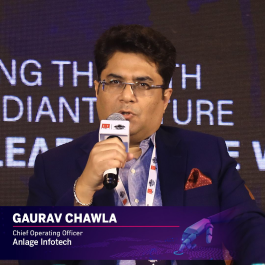

What if the single biggest predictor of your GCC’s success wasn’t its technology, location, or cost advantage — but the precision of its hiring metrics?
In today’s competitive global landscape, talent acquisition has evolved from a transactional process to a strategic business differentiator. For organizations operating through Global Capability Centers (GCCs), the stakes are even higher. GCCs today are not just cost-saving back offices — they are centres of excellence driving innovation, digital transformation, and value creation for parent enterprises.
A well-designed talent acquisition strategy can determine how quickly and effectively a GCC can scale, innovate, and sustain its competitive edge. But as every leader knows — what gets measured gets managed. Tracking the right metrics ensures your hiring strategy aligns with organizational goals, identifies bottlenecks, and continually improves outcomes.
Below, we explore the top seven metrics every GCC should track to build a robust, scalable, and future-ready talent acquisition engine.
Every day a role remains unfilled impacts productivity, delivery timelines, and business continuity. Time-to-fill measures how long it takes from raising a requisition to onboarding a new hire.
For GCCs handling high-volume or niche technology roles, this metric reflects both hiring efficiency and process maturity. A long time-to-fill could signal issues in sourcing strategy, inadequate employer branding, or bottlenecks in hiring approvals.
Benchmark tip: Mature GCCs typically maintain an average time-to-fill of 30‐45 days for general roles and 60–75 days for niche technology positions. By automating repetitive steps through AI recruitment tools, such as resume screening or skill-matching, organizations can drastically shorten this cycle.
Regularly analyzing time-to-fill also helps align recruitment capacity with business forecasts — a critical success factor for any high-growth GCC.
While speed matters, quality is paramount. Quality of hire measures the on-the-job performance, cultural fit, and retention rate of newly hired employees.
A GCC’s ability to become a centre of excellence depends on the caliber of its workforce — not just how quickly it hires. Tracking post-hire performance evaluations, early attrition, and manager satisfaction scores helps assess whether your sourcing channels and interview process are delivering top-tier talent.
Leading GCCs now incorporate analytics from performance management systems to evaluate the predictive validity of their talent acquisition models. In short, they’re not just hiring fast — they’re hiring right.
A low offer acceptance rate often signals deeper issues: compensation misalignment, candidate experience gaps, or poor employer perception. In the world of GCCs, where top technology and functional experts often juggle multiple offers, this metric is crucial.
A strong talent acquisition team must continuously monitor the percentage of accepted offers to total offers made. Anything below 75% should trigger a red flag.
Improving this number requires more than raising salaries. It demands creating an attractive value proposition — from flexible work models to upskilling opportunities — that positions your GCC as a global corporation offering career growth, not just a job.
In an age where candidates expect transparency and purpose, your talent acquisition narrative must mirror your brand promise.
Do most of your successful hires come from employee referrals, job boards, or specialized networks? Understanding the source of hire enables GCCs to allocate resources effectively and double down on channels that deliver quality candidates faster.
This metric is especially powerful when combined with data from AI recruitment tools, which can track candidate journeys, predict successful hires, and optimize sourcing strategies in real time.
In a recent industry benchmarks report, referrals contributed 14% of total hires while coming from just 2% of applicants — a striking efficiency ratio. This clearly shows why tracking the source of hire is essential: by recognizing high-yield channels, GCCs can focus efforts where they deliver the best results and reduce reliance on low-impact sources.
For instance, if a significant percentage of high-performing recruits originate from employee referrals, incentivizing this channel could drastically improve ROI. Similarly, a sharp drop in conversion from a particular vendor could signal quality issues that need immediate correction.
For GCCs operating in competitive talent hubs like Bangalore, Pune, or Hyderabad, fine-tuning sourcing channels can make the difference between steady hiring and persistent vacancies.
Recruitment isn’t just a people function — it’s a financial investment. Cost-per-hire measures the total expenditure (advertising, recruitment team costs, agency fees, assessments, relocation, etc.) divided by the number of hires made.
Monitoring this metric helps GCC leaders strike the right balance between cost-efficiency and quality. While lowering cost-per-hire is always a target, excessively cutting expenses can compromise quality, leading to higher turnover and retraining costs.
Leading talent acquisition functions use predictive analytics to forecast cost trends and budget allocations. Integrating automation and Talent Solutions platforms can optimize spends by eliminating redundancies, streamlining communication, and improving candidate engagement.
When benchmarked across time and role types, cost-per-hire becomes a powerful metric for financial planning and efficiency within GCC solutions.
A high turnover rate within the first six to twelve months often indicates hiring mismatches or onboarding issues. According to a Deloitte study, as many as one-third of new hires may leave within the first six months of joining — highlighting how critical early retention is.
This metric provides direct insight into the effectiveness of your talent acquisition process and the success of post-hire integration. For GCCs, early attrition can be particularly damaging, disrupting client deliverables and eroding institutional knowledge.
Retention analysis should look beyond numbers — into patterns of exit interviews, engagement survey results, and career progression data. Top-performing GCCs adopt structured onboarding programs, mentorship, and continuous feedback loops to integrate new hires seamlessly into their teams.
A healthy new hire retention rate of 85–90% reflects not just hiring success but cultural alignment — the hallmark of a mature talent acquisition strategy.
Innovation thrives in diverse environments. Measuring diversity and inclusion (D&I) across gender, age, background, and skills helps GCCs unlock creativity and resilience.
GCCs that intentionally track diversity metrics in their talent acquisition pipeline — from sourcing to shortlisting to hiring — are better equipped to attract global talent and meet ESG-driven corporate mandates.
Progressive organizations use analytics to identify unconscious bias in job descriptions, evaluate interview panel composition, and ensure fair shortlisting practices. Integrating AI recruitment tools further enhances fairness by eliminating subjective bias in resume screening.
By embedding D&I metrics in your talent acquisition strategy, your GCC positions itself as an inclusive employer of choice — one that mirrors the values of a forward-looking global corporation.
While external hiring gets the spotlight, internal mobility remains a hidden powerhouse of GCC growth. Tracking how often employees are promoted or laterally moved reveals whether the talent acquisition strategy aligns with long-term workforce development.
A robust internal mobility rate reduces hiring costs, strengthens engagement, and fosters a culture of continuous learning. It also reinforces the GCC’s role as a centre of excellence, nurturing talent from within.
Organizations adopting the Build-Operate-Transfer model benefit especially from strong internal pipelines — ensuring that once the GCC transitions to client ownership, it’s self-sustaining with a skilled, motivated workforce.
The future of talent acquisition in GCCs is data-driven. From predictive hiring analytics to sentiment analysis of candidate interactions, technology now enables granular visibility across every stage of the recruitment funnel.
Platforms equipped with AI recruitment tools and advanced reporting dashboards can provide insights like:
By consolidating this intelligence, GCCs can evolve from reactive hiring models to proactive talent forecasting. This approach aligns hiring velocity with project pipelines and business expansion goals — ensuring workforce readiness at all times.
Moreover, advanced Talent Solutions platforms integrate seamlessly with HRMS, payroll, and learning systems — creating an end-to-end ecosystem that continuously improves itself through feedback and data.
Tracking the right metrics is only the beginning. The true advantage lies in interpreting these insights to build agile, scalable recruitment strategies. For a GCC, this means:
When executed well, this integrated talent acquisition framework helps GCCs move from reactive hiring to strategic workforce orchestration — positioning them as true value creators within the enterprise.
In an era where digital acceleration and hybrid work models redefine global operations, talent acquisition has become a strategic pillar of business success.
For Global Capability Centers, tracking these seven metrics — from time-to-fill to diversity — ensures efficient hiring and a sustainable talent ecosystem. With the right use of analytics, automation, and structured feedback, GCCs can evolve into true hubs of innovation and agility.
Whether you’re scaling a 50-seater startup or managing a 5,000-strong GCC hub, your talent acquisition metrics are more than numbers — they’re the blueprint for building global capability excellence.
At Anlage, we deliver end-to-end GCC solutions, including Build-Operate-Transfer models and integrated Talent Solutions that make your talent acquisition smarter, faster, and future-ready.
Ready to scale your GCC with confidence?
Contact us today!
1. What is talent acquisition and why is it important for GCCs?
Talent acquisition is the strategic process of attracting, assessing, and hiring the right people to meet
business needs. For Global Capability Centers (GCCs), it’s vital because it drives scalability, delivery
speed, and innovation.
2. Which talent acquisition metrics should every GCC track?
Every GCC should monitor key metrics like time-to-fill, quality of hire, offer acceptance rate, cost-per-hire,
source of hire, new hire retention rate, and diversity and inclusion metrics to strengthen hiring efficiency
and workforce quality.
3. How can AI recruitment tools improve GCC hiring performance?
AI recruitment tools automate repetitive tasks such as screening and matching, improve accuracy using data
insights, and reduce hiring time — helping GCCs make faster, smarter, and bias-free hiring decisions.
4. How can GCCs attract and retain top talent?
GCCs can attract and retain top talent by building a strong employer brand, offering clear career growth
paths, promoting flexibility, and creating an engaging and inclusive workplace culture.
5. How does Anlage support GCCs in talent acquisition?
At Anlage, we provide end-to-end GCC solutions — from setup and operations to integrated Talent Solutions. Our
AI-powered hiring platforms streamline talent acquisition, reduce costs, and help build future-ready teams.


Gaurav Chawla, COO of Anlage Infotech, emphasized the transformative role of AI-powered analytics in HR at the 5th Edition of the GCC Summit 2024. Highlighting predictive analysis and smart tool utilization, he shared how these technologies can cut hiring cycle times by up to 60%, driving greater efficiency. The event took place at GMR Aerocity Hyderabad.
READ MORE